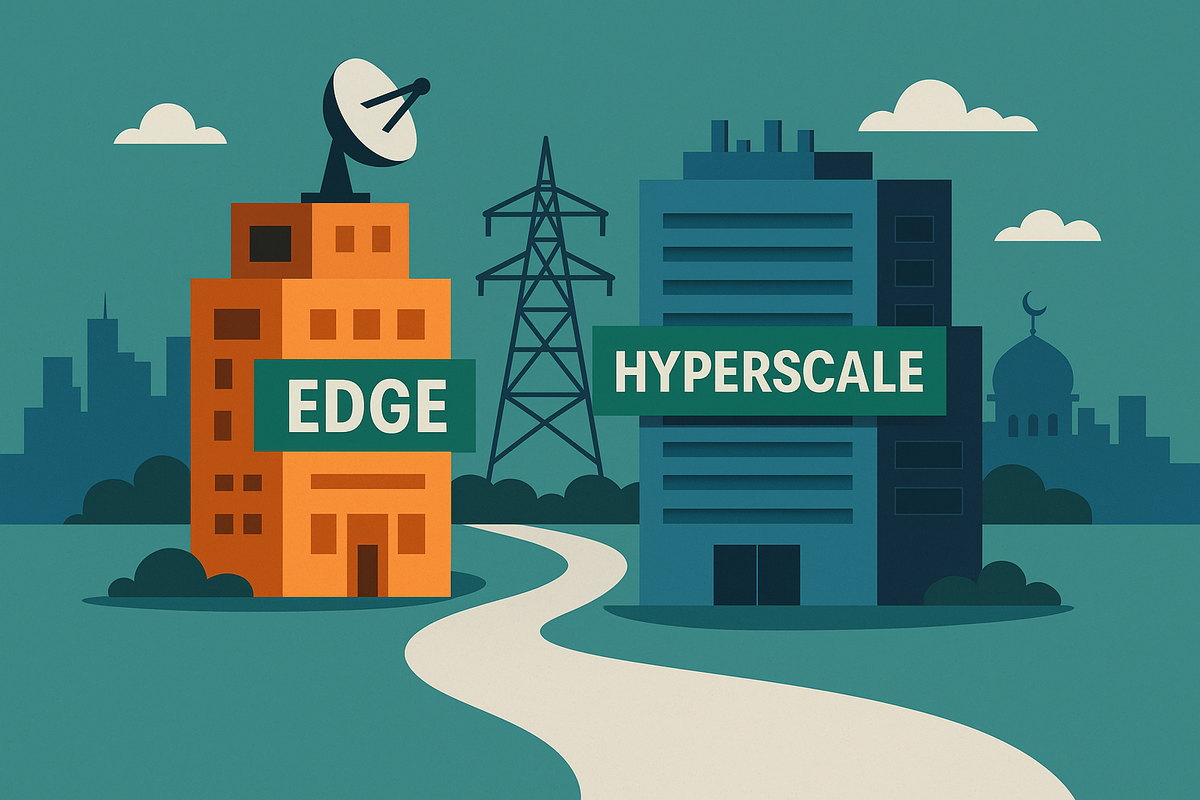Edge vs. Hyperscale: The Future of Gulf Infrastructure in 2025

Edge Data Center Growth in the Gulf Region: A Comparison with Hyperscale Providers
The Gulf region has witnessed a significant transformation in its digital infrastructure landscape over recent years. As demand for digital services accelerates, both traditional hyperscale data centers and emerging edge data centers are shaping how data is processed, stored, and delivered across markets such as the United Arab Emirates, Saudi Arabia, Qatar, and Bahrain. This article examines the rise of edge data centers in the Gulf and compares their development with that of established hyperscale providers.
Understanding Edge Data Centers vs. Hyperscale Facilities
- Hyperscale Data Centers: Large-scale facilities designed to support massive computational, storage, and network requirements. These usually serve cloud computing giants and host vast enterprise data workloads.
- Edge Data Centers: Smaller facilities located closer to end-users, designed to minimize latency by localizing data processing and caching key content at the network edge.
Drivers of Edge Data Center Growth
A confluence of market trends has increased the relevance of edge data centers in the Gulf region:
- Rapid adoption of smart city initiatives, particularly in the UAE and Saudi Arabia, generating high data volumes from IoT devices and real-time applications.
- Expansion of 5G networks, which lowers latency requirements and creates demand for localized compute and storage capabilities.
- The proliferation of digital services in sectors such as e-commerce, healthcare, and media, many of which benefit from edge-based models to ensure low latency and data sovereignty.
Comparative Growth Trajectories
Hyperscale data centers have traditionally dominated the Gulf’s digital infrastructure sector, with investments from both local enterprises and international cloud providers such as Microsoft Azure, Amazon Web Services (AWS), and Google Cloud. These hyperscale facilities, typically situated in central metropolitan areas, continue to expand, leveraging the region’s connectivity and investment incentives.
However, the continued centralization of hyperscale resources presents challenges related to latency and data transfer costs, particularly for real-time and bandwidth-intensive applications. This dynamic is driving interest in edge data centers, which offer agile deployments tailored to specific locales and industries. Examples of these deployments can be found in the expansion of regional telecom operators and smaller, modular data center vendors serving local industry use-cases.
Strategic Implications for the Gulf Region
- Latency Reduction: Edge data centers support applications requiring near-instant response times, such as autonomous vehicles, remote healthcare diagnostics, and augmented reality experiences.
- Data Localization: Edge deployments provide improved compliance with national data residency regulations, a growing concern for governments across the Gulf.
- Resilience: Distributed edge facilities can complement hyperscale centers by enabling business continuity in case of disruption or downtime at central locations.
Limitations and Challenges
Despite potential benefits, the deployment of edge data centers faces several hurdles in the Gulf region:
- Legacy Infrastructure: Some Gulf countries continue to rely on aging network infrastructure outside main cities, limiting the efficiency and scalability of edge deployments.
- Provisioning Delays: Building and certifying new edge facilities can face regulatory and logistical delays, particularly in remote areas or developing economic zones.
- Investment Prioritization: Capital flows still favor large-scale hyperscale projects, meaning edge deployments must often demonstrate compelling business cases for funding.
Conclusion
The Gulf region’s data center landscape is entering a new phase, characterized by the coexistence of established hyperscale facilities and an emerging wave of edge data center deployments. While hyperscale centers continue to underpin core cloud infrastructure, edge data centers are increasingly regarded as critical for meeting latency-sensitive and localized digital service demands. Strategic synergy between these models is likely to shape the Gulf’s future digital ecosystem, but realization of edge potential will depend on overcoming infrastructure bottlenecks and fostering agile provisioning environments.
